
The spotted flycatcher is a small passerine bird in the Old World flycatcher family. It breeds in most of Europe and in the Palearctic to Siberia, and is migratory, wintering in Africa and south western Asia. It is declining in parts of its range.

The buff arches is a moth of the family Drepanidae. The species was first described by Johann Siegfried Hufnagel in 1766. It is found throughout Europe and is well distributed in the British Isles except the far north of England and all of Scotland. They live in deciduous and coniferous forests with large populations of their foodplants, but also in gardens and parks.

The yellow-legged buttonquail is a buttonquail, one of a small family of birds which resemble, but are unrelated to, the true quails. This family is peculiar in that the females are larger and more colourful than the males and are polyandrous.

Psilocybe caerulipes, commonly known as blue-foot, is a rare psilocybin mushroom of the family Hymenogastraceae, having psilocybin and psilocin as main active compounds. An older synonym is Agaricus caerulipes.
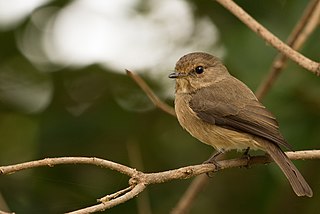
The African dusky flycatcher, also known as the dusky-brown flycatcher or dusky alseonax, is a small passerine bird of the Old World flycatcher family, Muscicapidae. It is a resident breeder in Africa from Nigeria, the Central African Republic, South Sudan and Ethiopia south to South Africa. It is very common in its woodland habitat, which includes riverine forests, evergreen forest edges and clearings, especially near water bodies such as lakes, dams and streams, and well-wooded suburban gardens.
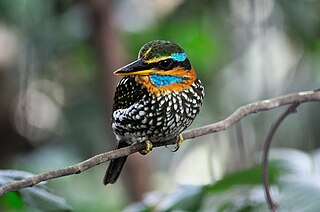
The spotted wood kingfisher or spotted kingfisher is a species of bird in the family Alcedinidae. It is endemic to the Philippines where its natural habitat is subtropical or tropical moist lowland forests.
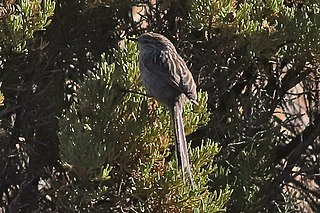
The streak-backed tit-spinetail, or streaked tit-spinetail, is a species of bird in the Furnariinae subfamily of the ovenbird family Furnariidae. It is found in Chile and Peru.
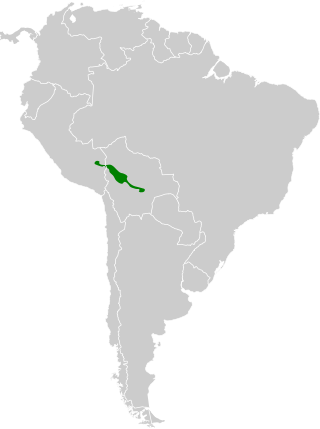
The Bolivian recurvebill is a bird species in the Furnariinae subfamily of the ovenbird family Furnariidae. It is found in Bolivia and Peru.
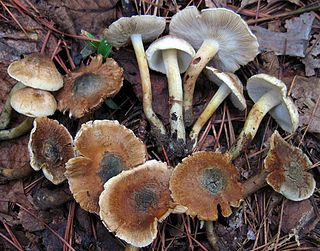
Inocybe corydalina var. corydalina, commonly known as the greenflush fibrecap, is a member of the genus Inocybe which is widely distributed in temperate forests. It is a small mycorrhizal mushroom which contains a small amount of the hallucinogen psilocybin.
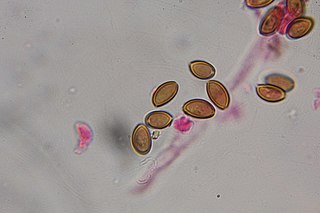
Psilocybe strictipes is a mushroom that grows on grassy meadows and lawns; It is found throughout the cool temperate and subarctic regions of the Northern Hemisphere and it is most common in Europe, and the Pacific Northwest region of North America. It contains the psychoactive compound psilocybin is closely related to Psilocybe semilanceata and Psilocybe pelliculosa. Psilocybe strictipes is commonly confused with Psilocybe semilanceata and can be differentiated by its lack of a papilla and a convex to subumbonate cap. "Strictipes" comes from the Latin words stricti (narrow) and pes (foot).
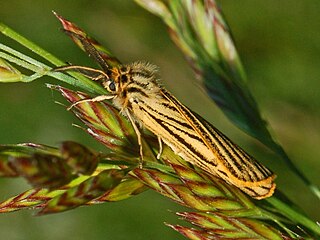
Spiris striata, the feathered footman, is a moth of the family Erebidae. The species was first described by Carl Linnaeus in his 1758 10th edition of Systema Naturae.
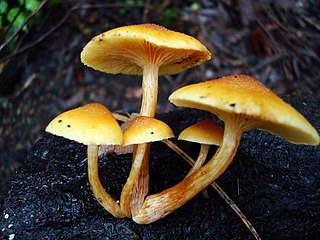
Gymnopilus luteoviridis is a widely distributed mushroom-forming fungus of the Eastern United States that contains the hallucinogens psilocybin and psilocin.

Amanita nothofagi is a species of fungus in the family Amanitaceae. Endemic to New Zealand, the species was first described by mycologist Greta Stevenson in 1962. The fruit bodies have dark brown caps that are up to 13 cm (5.1 in) in diameter and covered with patches of soft greyish-brown scales or warts. The gills underneath the cap are crowded together, free from attachment to the stem, and white, becoming tinged with yellow in age. The stem of the mushroom is 4–14 cm (1.6–5.5 in) long by 0.5–2.5 cm (0.2–1.0 in) thick, and has a ring. The spore print is white, and individual spores are spherical to ellipsoid, measuring 7.5–9 by 7.5–9 micrometres. The mushroom may be confused with another New Zealand species, A. australis, but can be distinguished by certain characteristics. Amanita nothofagi is a mycorrhizal species, and grows in association with native New Zealand trees such as Southern Beech.

Amanita pekeoides is a species of fungus in the family Amanitaceae. It is endemic to New Zealand.

Pseudobunaea alinda is a species of very large moths in the family Saturniidae. The species was first described by Dru Drury in 1782, and is found in Angola, Cameroon, Congo, DR Congo, Gabon, Guinea, Ivory Coast, Sierra Leone, and Tanzania.
Stenorista fortunata is a moth in the family Crambidae. It was described by Schaus in 1912. It is found in Costa Rica.
Prolita invariabilis is a moth of the family Gelechiidae. It was described by William D. Kearfott in 1908. It is found in the US states of Utah, Wyoming, Arizona, California, Colorado, Oregon and New Mexico.
Alynda striata is a moth in the family Oecophoridae. It was described by John Frederick Gates Clarke in 1978. It is found in Chile.

The Mediterranean flycatcher is a small passerine bird in the Old World flycatcher family. It breeds on the Balearic Islands, Corsica and Sardinia, and is migratory, wintering in Africa. The International Ornithologists' Union has split the species from the spotted flycatcher, but other taxonomic authorities considered it still conspecific.
Phaeographis striata is a species of script lichen in the family Graphidaceae, endemic to the Galápagos Islands. It is characterized by its inconspicuous thallus and striate (grooved) thalline margins of the lirellae. The species is found in the lower transition zone, growing on columnar cacti and other plants native to the region.















